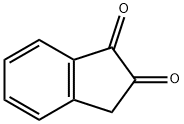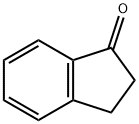Description
In 1958, IND (1,2-diketohydrindene) was first synthesized by Cava and co-workers. However, in 1997, Dr. Joullie’s research group from the University of Pennsylvania and Ramotowski's research group from the U.S. Secret Service recognized its use as a fingerprint reagent. 1,2-Indanedione (IND) reacts with amino acid contents of latent fingermarks (LFM). IND is an extremely sensitive amino acid reagent that develops latent fingerprints similar to D.F.O. Developed prints may be enhanced with the Zinc Chloride HFE-7100 mixture and visualized under green ALS light (~530nm) with orange or red filtration. It is a fluorescent reagent used to develop LFM on dry, porous surfaces, including thermal papers, due to its high sensitivity towards amino acids[1].
References
[1] Sachil Kumar, G. S. Bumbrah, D. Bhagat. “1,2-Indanedione (IND) Reagent for Detection of Latent Fingermarks: A Review.” Shakespeare and the 99% 65 1 (2021).






